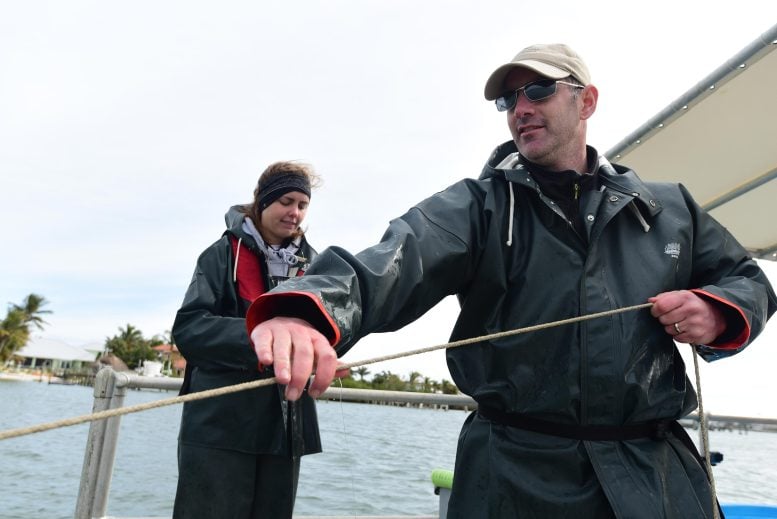How Oyster Sanctuaries Are Guiding Ecological Restoration in Chesapeake Bay
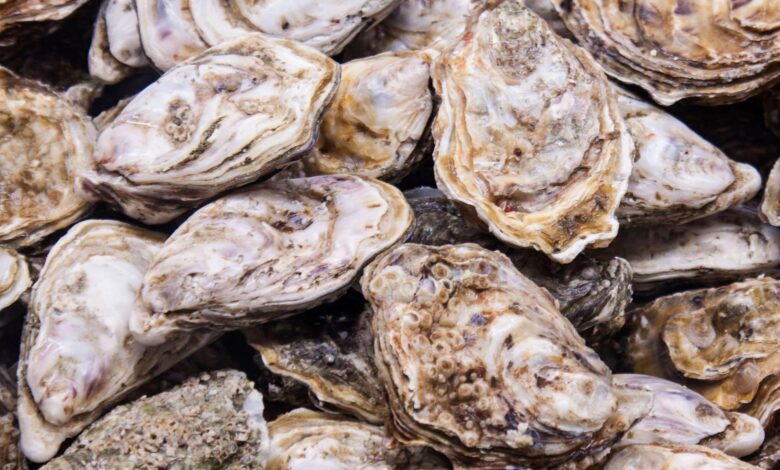
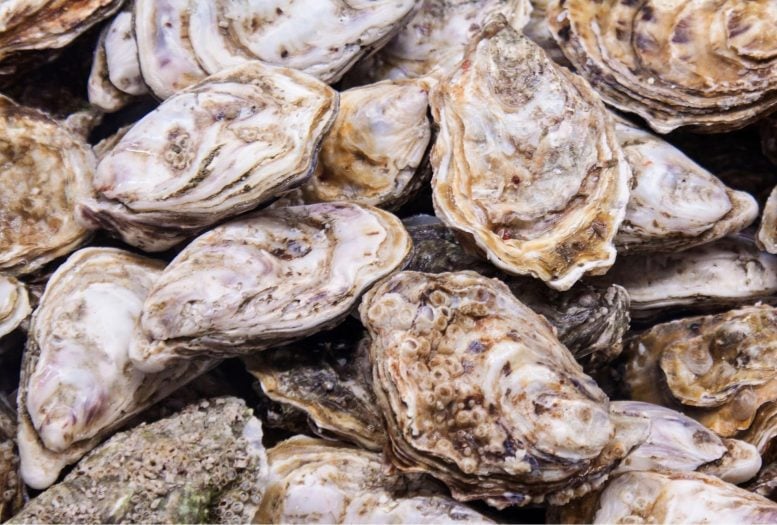
Research shows Chesapeake Bay’s oyster sanctuaries are effective, boosting oyster populations and overall biodiversity, despite challenges from native parasites. The sanctuaries enhance habitat quality and support a richer marine ecosystem.
Oyster sanctuaries in Chesapeake Bay are enhancing oyster populations and marine biodiversity, despite the presence of native parasites.
Oyster sanctuaries are among the most hotly debated strategies in the campaign to restore Chesapeake Bay. However, recent research by Smithsonian biologists supports their effectiveness in enhancing both oyster populations and overall biodiversity. A new study published in Marine Ecology Progress Series reveals that oyster sanctuaries contain more abundant populations of oysters and other marine life, even in the presence of two common parasites.
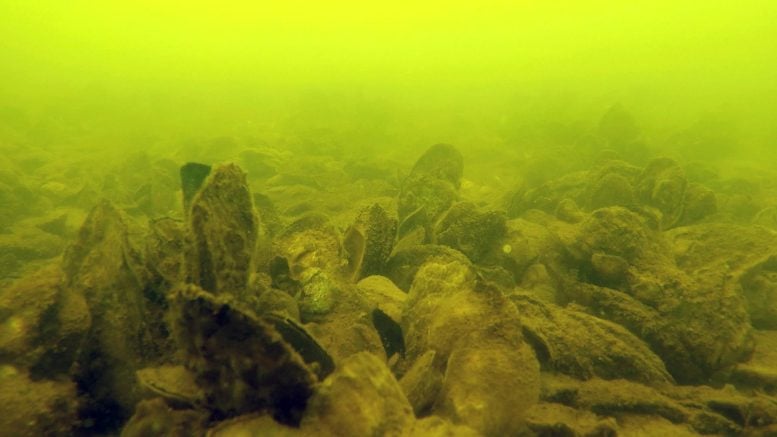
A restored oyster reef in a sanctuary in the James River, Maryland. Credit: Fisheries Conservation Lab, Smithsonian Environmental Research Center
Effective Sanctuary Strategies
Oysters are the backbone of Chesapeake Bay, contributing millions of dollars to the regional economy annually and serving as crucial habitats and water-purifying filter feeders. However, their populations have plummeted to approximately 1% of historic levels due to disease, overharvesting, habitat loss, and pollution.
Over the past two decades, Maryland and Virginia have worked to restore their oysters by creating vast networks of sanctuaries where oysters are protected from harvest. According to the researchers, this has led to a rebound in oyster growth, habitat quality, and biodiversity within the sanctuaries.
“The sanctuary programs appear to be working and facilitating oyster reef regrowth after so many decades of overharvesting,” said lead author Zofia Anchondo, who conducted the research as part of her graduate fellowship with the Smithsonian Environmental Research Center and the University of North Carolina at Chapel Hill.
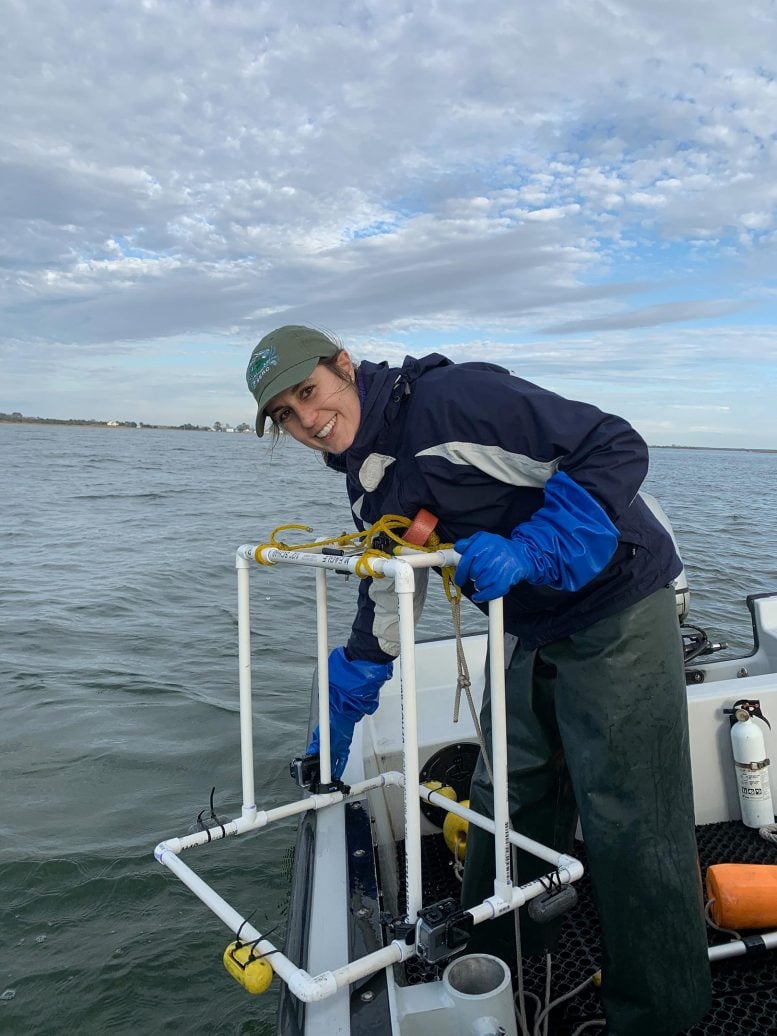
Allison Tracy deploys a camera rig with GoPros attached to survey oyster reefs underwater. Credit: Fisheries Conservation Lab, Smithsonian Environmental Research Center
Parasite Dynamics in Sanctuaries
The resurgence in marine life went hand in hand with a rise in oyster parasites. The study looked at two parasites in particular: the boring sponge and the mud blister worm. Boring sponges drill holes through oyster shells to find shelter. Blister worms form U-shaped burrows inside the shells. The presence of either can render oysters unsightly or even unmarketable. Both are considered likely native to the bay, and neither are harmful to people. For this study, the researchers did not look at dermo or MSX, two non-native parasites responsible for some of the worst oyster crashes, though they collected data for a follow-up study.
Parasitism is the most common lifestyle on Earth, so a parasite’s presence is not necessarily a sign that the environment is out of joint, the authors pointed out.
Visit the oyster reefs of Harris Creek, a sanctuary in Maryland’s Choptank River, and Broad Creek, a nearby area that’s open to harvest. Credit: Fisheries Conservation Lab, Smithsonian Environmental Research Center
“Parasites have been ignored as an important component of biodiversity,” said Allison Tracy, a co-author from the University of Maryland. “But they’re a natural part of ecosystems….The way ecosystems naturally function depends on parasite effects.”
“They’re not preventing high oyster densities,” said Matt Ogburn, a co-author and senior scientist with the Smithsonian Environmental Research Center. They may even be good for the oysters’ long-term evolution, Ogburn added, though that question needs more definitive research. “Restoring the oyster reefs is likely to be helping the oyster population become more resilient to the parasites that are out there now, compared to what would be possible if everything was harvested all the time.”
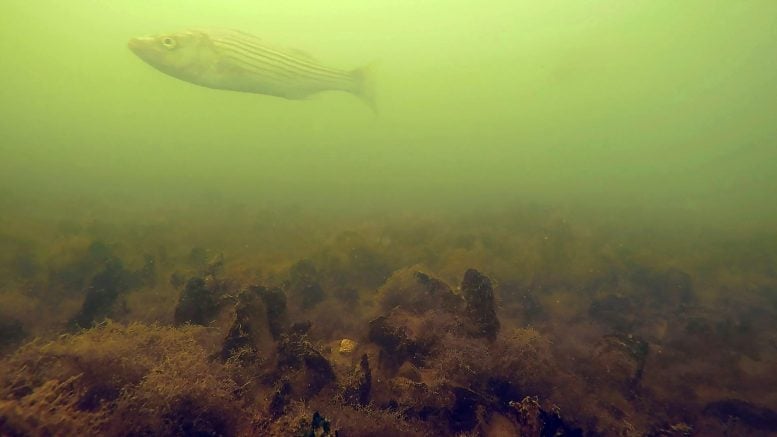
A striped bass, also known as a rockfish, swims above an oyster reef in Chesapeake Bay. Credit: Fisheries Conservation Lab, Smithsonian Environmental Research Center
Research Findings and Sanctuary Benefits
The new study focused on three Chesapeake tributaries: the Choptank River, the Great Wicomico River and the James River. Each had its own oyster sanctuary and another harvest area for comparison, where watermen and -women could freely catch oysters. The scientists used footage from underwater GoPro cameras to give each reef a habitat “score” (one through four, based on the percentage of oyster cover and vertical structure). The GoPro videos also enabled them to record other animals visiting the oyster reefs. Working under state research permits, divers later collected some of the oysters from each reef to estimate oyster density and search for parasites.
Overall, oysters fared better in the sanctuaries. All three tributaries had higher densities of legal, harvest-sized oysters in their sanctuaries than in their harvest sites. In two tributaries—the James and Great Wicomico rivers—oysters of all sizes, including juveniles and baby oysters, were more abundant in the sanctuaries.
Sanctuaries also scored higher for habitat quality, and the videos captured plenty of underwater animals taking advantage of them. Blue crabs, rockfish and summer flounder were just a few of the species that flocked to the sanctuary reefs. In the James and Great Wicomico rivers, the researchers estimated sanctuaries hosted 10 times as many animals, and nearly double the number of species, as the harvest reefs. The one exception was the Choptank River, where animal life was low in both the sanctuary and harvest sites.
Yet as the oysters flourished, so did the two parasites. More than half the oysters in all six sites—sanctuary and harvest—had the telltale holes of a boring sponge attack. However, the boring sponge was more prevalent in sanctuaries than harvest sites within two of the three tributaries. Mud blister worms were far less abundant—infecting 2–10% of oysters—but still higher in sanctuaries than harvest sites for two of the tributaries.
Neither parasite, the authors pointed out, is dangerous to humans. Both parasites only infect oyster shells, not the oyster tissue that people eat.
“It’s more of a concern for the fishery, because they can make the shells less attractive,” Tracy said. “It can decrease the value of the oyster for the half-shell market. But they have no effect on our health.” In the unlikely event that a person did accidentally slurp up one of these parasites with their raw oyster, Tracy said, it would simply pass through their system without impact. “There’s no shell that it can find to bore into in your stomach. So basically, it would be uninterested.”
Reference: “Reefs in no-take reserves host more oysters, macroparasites, and macrofauna than harvested reefs across an estuarine salinity gradient” by Zofia B. Anchondo, Allison M. Tracy, Aiman Raza, Karli A. Meckler and Matthew B. Ogburn, 4 July 2024, Marine Ecology Progress Series.
DOI: 10.3354/meps14615
